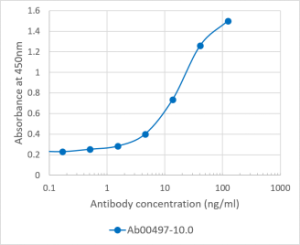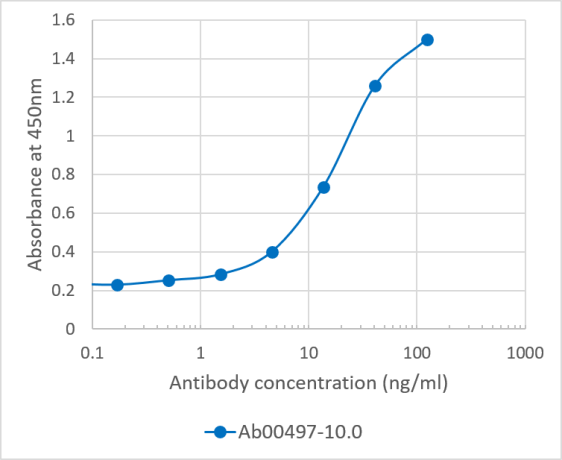![绝对抗体/抗IgE[TES-C21]/200μg/Ab00497-23.0](https://www.ebiomall.cn/images/no_picture.gif)
Alternative Name(s) of Target: Immunoglobulin EImmunogen: Polyclonal human IgE.
Application Notes: The antibody binds specifically to IgE, an immunoglobulin isotype secreted by upon stimulation of B cells by interleukins Il-4 and IL-13. IgE provides immunity to parasites such as helminths and Plasmodium falciparum. The immunoglobulin also plays a central role in the development of Type I hypersensitivity reactions and allergic diseases such as asthma, sinusitis and food allergies. These allergic responses are triggered by the binding of IgE to the high affinity receptor FcεRI, expressed on the surface of basophils and mast cells. Binding of IgE causes cross-linking of the receptor, inducing degranulation and release ofinflammatory mediators, particularly of histamine. The monoclonal antibody TES-C21 binds to secreted IgE and to IgE expressed on the surface of IgE-producing B cells, thereby inhibiting IgE binding to FcεRI and the release of histamine from mast cells. The monoclonal antibody can have diagnostic applications, such as for identifying and quantifying IgE-expressing B cells and IgE levels in serum samples, and therapeutic applications in the treatment of allergies. Furthermore, the antibody can conjugated to cytotoxic drugs and deliver them specifically to IgE-producing B cells.
Antibody first published in:Kolbinger F, Saldanha J, Hardman N, Bendig MM.Humanization of a mouse anti-human IgE antibody: a potential therapeutic for IgE-mediated allergies.Protein Eng. 1993 Nov;6(8):971-80.PMID:8309946Note on publication:Describes the therapeutic potential of the murine monoclonal antibody TES-C21 in the treatment of IgE-mediated allergies, and the production of a humanized version of the antibody to reduce the immunogenicity in humans.


Binding curve of anti-IgE antibody TES-C21 (Ab00497-10.0) to human IgE Fc domain ELISA Plate coated with human IgE Fc domain (Pr00104-14.5) at a concentration of 5 µg/ml. A 3-fold serial dilution from 10,000 to 0.1 ng/ml was performed using Ab00497-10.0. For detection, a 1:4000 dilution of HRP labelled anti-human kappa light chain antibody was used.



